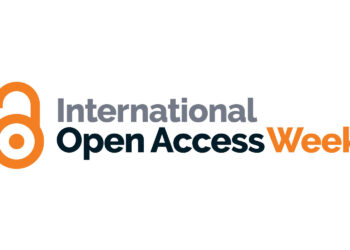It’s a common metaphor — we, the providers of content, are moving from something to something else — digital, Web 3.0, the age of mobile, semantics. The transport metaphor, in addition to giving rise to legions of travel agents and tour guides (i.e., consultants) and moving companies (e.g., vendors and design shops), has an inescapable absolutism to it. We are leaving one thing, bound for another.
One place we’re moving is to things called “platforms” — stylish, modern new types of living quarters — Apple Acres, Google Farms, and Amazon Woods. They call their apartments “apps.”
We’re excited about moving to these new platforms and owning an app or two of our own. All the other kids have an app. We should have an app. According to a recent post on ireaderreview, as we move into our app on the new platform, we think:
- We’ll have a great app.
- We’ll get guests for free.
- We’ll create a following.
- We’re in control.
- We’re a success.
But the platform landlords see it differently:
- Providers are building a piece of the platform. A piece the platform can throw away or replace with another near-identical piece.
- Providers get customers for free only at the start. If providers start to profit from these customers, and if the platform gains power, the provider has to pay a platform tax.
- Providers are providing value to the platform’s customers.
- The platform is in control.
- The platform is a success.
While we might complain that our independence, direct connection with our friends, and ability to make a living are all impeded by the dominance of these platforms, we feel like we have no other place to live. So, we continue to move into these platforms, reassured by the owners of these new properties that our friends already are partying there, or will want to party there soon. Our old digs — print, the browser, the desktop machine — those are where your parents partied, and they’re going to be bulldozed soon enough. If you want to be popular now and have a roof over your head in fi ve years, you’d better have a place with the platform owners.
Why move to a land of higher taxes? And why party with friends you can no longer get to know?
This is the challenge we face, a Hobbesian choice between fealty to plans like these and outright revolt.
But wait! It looks like something strange is happening twixt these property owners. Apple Acres and Amazon Woods have built atop one another, with Amazon Woods providing tenants to Apple Acres by the thousands — and now, Apple Acres wants to tax Amazon Woods itself for these tenants.
Another platform owner has become a provider. In Apple’s opinion, it’s clear the platform wins.
Even owning another platform can’t stave off the platform taxman. As Alan Quatermain puts it:
Apple decides that all iOS apps which have anything to do with purchased content must offer to sell that content in-app, giving Apple a 30% cut. At no point does Apple make any acknowledgement of the immense costs incurred in the management of such a catalog. They just want 30% of sale, but the seller must still bear all the costs of that sale. . . . They want us to inflate all our prices (across the board) so people will buy iPhones and shop at the iBookstore instead.
Meanwhile, Google Farms has taken note of the upcoming battle and created a way to bypass the strife — Google One Pass, a publisher payment system designed for magazine and newspaper publishers who wish to publish on various devices like tablets and smartphones. It means that:
. . . publishers can customize how and when they charge for content while experimenting with different models to see what works best for them—offering subscriptions, metered access, “freemium” content or even single articles for sale from their websites or mobile apps. The service also lets publishers give existing print subscribers free (or discounted) access to digital content.
One Pass takes a 10% cut of the revenues flowing through it, and offers a much less seamless integration than Apple’s payment system. Most significantly, publishers can set their prices and receive subscriber information via One Pass.
Platforms can be managed so that the owner competes fairly and transparently with its providers. Given the advantages this still creates for platform owners, Apple’s latest move seems greedy, domineering, and anti-competitive. Those contemplating moving onto that platform may want to consider the tax situation, which is now clearly different. Luckily, there are competitors of equal size and capability in the arena.
Or perhaps Apple’s just ahead of the game. Maybe providers and platforms are truly destined to be incompatible.
Discussion
9 Thoughts on "Providers vs. Platforms — Why Must We Move?"
Kent, I’m glad you brought this subject up (and I’ll be asking Michael similar question in his posting). I don’t want to play the role of an Apple apologist here, as their announcement was not good news for anyone hoping to do business on the iPhone/iPad platform (though it was good news for Apple and likely good news in terms of user experience). But the first question that springs to mind is, isn’t what Apple is doing here the exact same thing that everyone else already does?
Correct me if I’m wrong, but if I want to sell my book on Amazon’s platform, whether electronic or in print, I’m still paying at least that same 30% rate. Ditto brick and mortar bookstores, B&N/Nook, Kobo (has Google yet announced what cut they want for their e-bookstore)? How much of a revenue cut do aggregators of scholarly journal subscriptions claim? Even worse, if I want to sell my subscription on Amazon’s platform, I pay that same 30%, plus “delivery costs” plus I’m not allowed to set the price of my own product, Amazon claims the right to do that. And doesn’t Amazon’s Kindle agreement require “most favored nation status” as well, influencing your ability to sell outside of the Kindle environment? So in some ways, this isn’t Apple being particularly evil, it’s Apple being just as evil as everyone else.
I’m also not sure this is a strike directed at publishers or content producers, I think it’s more of an attack on the third party aggregators and resellers. The biggest complainers so far about Apple’s price structure are companies like Amazon or Readability or Rhapsody or your quoted spokesman from Kobo, all of whom exist using the exact same business model as Apple is instituting here, reselling the content produced by others and keeping around 30% of the revenue generated by the sale (which makes their complaints somewhat hypocritical). This is a move by Apple to take out these competing middlemen. Most publishers will be fine with a 70/30 split, that’s what they’re already operating under. Is this policy instead just a way of encouraging content producers to deal directly with Apple rather than through third parties?
But you’re right in that a monopoly is bad for consumers, bad for content creators and bad for publishers, so Google’s willingness to compete here is a big deal. Remember that poor, suffering Amazon used to turn that split the other way, taking 70% of revenue before Apple came along to offer some competition. It’ll be interesting to see if Google can create a compelling user experience, as they’ve fared poorly in doing so over recent years (engineering-driven companies have a lot of problems with user experience design).
And I think we’ll see a lot more development of mobile websites for scholarly journals. I’ve yet to see a journal app that does anything compelling that can’t be accomplished by a website, so perhaps things are already going in this direction.
David, I don’t think Kindle has the objectionable restrictions around selling off their platform that Apple imposes. There’s nothing in the terms and conditions here https://kindlepublishing.amazon.com/gp/vendor/kindlepubs/common/get-content?id=200492750 which is linked off the article you cited.
And if you compare some digital subscription prices, the Kindle version is not always cheapest (ie Wall Street Journal $15/month on Kindle vs. $2/week from their web site).
Looks like that article has the wrong link–that’s the terms and conditions for blog publishing, not for newspapers or magazines, which can be read here:
https://kindlepublishing.amazon.com/gp/vendor/kindlepubs/common/get-content?id=200492750
I do agree that Kindle’s impositions are different (and in some ways less onerous than Apple’s), but they’re no great shakes either. As you note, it’s unclear to me how Amazon decides what the price of your product is going to be. This is particularly worrisome from the point of view of a scholarly journal, where the subscription costs are often very different from that of commercial magazines.
Having experienced Amazon’s pricing for journals twice now (once for NEJM, once for JBJS), I can tell you that they have good reasons for keeping publishers outside their pricing decisions (stemming from the fact that they’re also a publisher), and that their journal pricing is sensible and reality-based. In fact, combined with their monthly billing, two-week sampling, and smooth e-commerce system, it’s downright admirable in my view.
Thanks for the info Kent. The opaqueness of the process from the outside was worrisome. Glad to hear they’re on the ball. Any comment on uptake of either journal via the Kindle? Is the lack of color or high res images on the device a dealbreaker or do most MD’s just use their iPad/iPhone anyway?
No such limits in that link either. I guess the key point is Amazon has terms and conditions for selling via Kindle which you may not like but you can do whatever you want elsewhere. Apple is dictating what you can do elsewhere.
In essence, yes, that’s pretty much what I’m saying. Apple’s terms are awful, other companies terms are awful as well (though often for different reasons).
Amazon does have several things in their terms of service for books which do affect your ability to do business outside of Amazon, and perhaps that’s what I’m thinking of, as you note there’s no mention of this in their periodical subscription terms.
For books though, you either give Amazon 65% of your revenue from each sale, or you agree to terms that do indeed limit what you can do elsewhere (and you still owe them the same 30% vig as Apple). For instance, Amazon has a “most favored nation” clause where they will only pay you royalties on the lowest list price offered anywhere for your book. So that means you can’t run an exclusive sale yourself or with another vendor, as Amazon can then immediately meet those terms. Amazon also demands “sole and complete discretion to set the retail price at which your Digital Books are sold through the Program.” This will affect your business outside of Amazon as most other eBook stores also demand “most favored nation” status. If Amazon decides to sell your book for 99 cents, then every other outlet can do the same. Amazon also has the right to give away “chapters or portions” of your book for free, which again can have direct impact on your own sales, particularly if you’re a reference publisher looking to sell individual chapters.
So while not the same beast as Apple, still lots of problems and terms which do affect your business outside of Amazon.
Which may all point to direct sales to customers as a better strategy.




